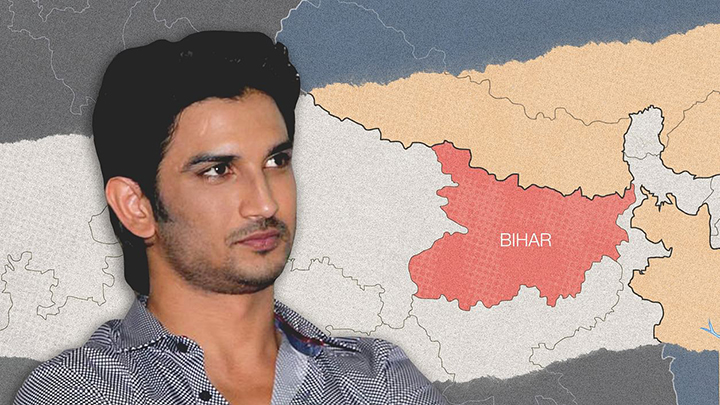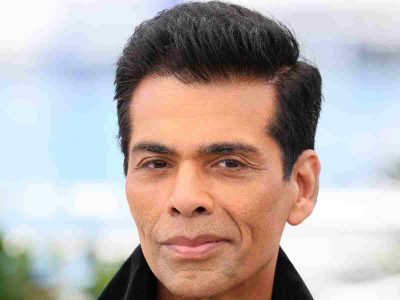After Shatrughan Sinha, Sushant Singh Rajput was probably the first actor from the state who could find space as the leading man
The house in Rajiv Nagar — a middle-class locality in north Patna — is exactly the sort of place that a government servant’s family would occupy. It’s also the kind of place that is ready for neighbour’s envy when the son gets Seventh Rank in the All India Engineering Entrance Examination. It took a few years before that envy turned into reflected pride. By then, Sushant Singh Rajput had not only tamed the entrance test coaching hoardings that rule Patna’s streets, but had also become a known face in Bollywood films.
In doing so, he made the young and the restless in the city dream of a lucky escape from the neat certitudes of middle-class Patna.
The early part of Sushant’s journey was the usual Patna story, a successful one though. To be young in Patna is to be ready to leave it; the city itself is a giant waiting room for the next departure of lakhs of aspirational, even ambitious, young lives. Many of Sushant’s schoolmates at St Karen’s would have left the city long back — most with far less adventurous scripts. An engineering dropout, that too from the prestigious Delhi College of Engineering (DCE), was a risky social profile. His success in the short career that he had in films ensured that it was a celebrated one.
There are different ways in which the successful can react to their association with Patna — whether it’s the accident of birth or schooling. Some can be, for instance, brutally honest. “I was born in Patna. I can’t efface that from my history. It’s in my passport,” bureaucrat-turned-novelist Upamanyu Chatterjee had once remarked. Unlike the famous Bihari Babu in Bollywood, Sushant had too short a career to show interest in the public life of the city. Furthermore, unlike Shatrughan Sinha, his family had settled in the state capital. Sushant’s family originally belonged to Purnea district in the Seemanchal region of Bihar, more known for floods and great Hindi writer Phanishwar Nath Renu.
Though born and brought up in Patna, Sushant identified with his village and home district Purnea. It isn’t unusual in Bihar to see people having a strong district-identity, even if the borders of districts continue to be changed to create new ones. In popular culture, the district-identity is seen in how Bhojpuri pop-numbers have musical banter around the superiority of one district or the other.
Perhaps it has to do more with the distinct dialect-identity and land-rootedness. In urban areas, that sense is more visible in families who retain rural connections and interest in farms and fields in native villages. Sushant’s father Krishna Kishor Singh never lost that connection and made it a point to visit their village during Chhath festivities every year.
If recollections pouring in are any indication, Sushant wanted to make a modest beginning in public life through a social service programme in his village, Maldiha. Lalit Kumar, one of Sushant’s childhood friends recalled that Gulshan, as Sushant was fondly called in his village, had once expressed his resolve to do well in Bollywood and make Purnea proud. Last year, he visited his village after 17 years, the first time since the AIEEE entrance, and told his village friends that he would launch a welfare project in the village in the memory of his mother.
While remembering Sushant’s childhood, Lalit also shared an anecdote about how Sushant expressed his desire to become a cricketer when he was 10. So when his friends watched him in the lead role in the biopic MS Dhoni, they playfully said the film has fulfilled Sushant’s dual desires of becoming an actor and a cricketer.
Back in his hometown, Sushant’s family could be seen as a microcosm of an understated social process. In some ways, very small changes in the professional profile of Patna’s middle-class can be seen in how his father, a BISCOMAUN officer, handled the career choices of his children.
Mitu Singh, one of Sushant’s four elder sisters, is a state-level cricketer. The rapid rise in the number of Scooty-riding women on Patna’s streets isn’t an insignificant sign, though, it shouldn’t be dissected for social theories yet. These are slow but discernible changes in a state where the sense of social recognition is still defined by entering the coveted civil services. However, a tragic suicide doesn’t do this story any good.
In recent years, Bihar’s presence in the Hindi film industry has been more about top acting talent — Manoj Bajpai, Pankaj Tripathi, and Sanjay Mishra, to name a few. However, the nature of the films made in Bollywood couldn’t allow them to be the lead actor. With their obvious acting prowess, they were typecast in strong “character roles”. In short, artistic caliber came in the way of them becoming star material.
Sushant was different. After Shatrughan Sinha, he was probably the first actor from the state who could find space as the leading man in most of the few films he did, few of which were commercially-successful too. In that way, the popular appeal of his work made his presence important for the state.
This is important for one more reason, it was born out of anxiety. The state, especially its young population, had a long hiatus without a chance to call a popular star their own. When the cricket icon MS Dhoni burst into the international scene in 2004-2005, many Biharis thought that they were deprived of their claim on a star because of the Bihar-Jharkhand bifurcation in 2000. Those who claimed him as a Bihar star were reminded of his Jharkhand home and team.
That wasn’t the case with Sushant. His hometown and his ancestral village could claim him as their own. They would have liked him doing a mainstream film that could portray a few facets of Bihar with some degree of authenticity, something that no film has done yet. That wasn’t to be. He died far away, in a different city and quite alone.
If you, or someone you know, needs help to overcome suicidal thoughts, contact: Fortis: +91 8376804102; AASRA: +91 98204 66726; The Samaritans, Mumbai: +91 84229 84528 (5 pm to 8 pm)
www.newslaundry.com





